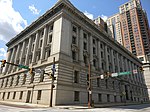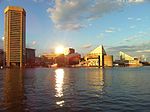United States lightship Chesapeake (LV-116)

United States lightship Chesapeake (LS-116/WAL-538/WLV-538) is a museum ship owned by the National Park Service and on a 25-year loan to Baltimore City, and is operated by Historic Ships in Baltimore Museum in Baltimore, Maryland. A National Historic Landmark, she is one of a small number of preserved lightships. Since 1820, several lightships have served at the Chesapeake lightship station and have been called Chesapeake. Lightships were initially lettered in the early 1800s, but then numbered as they were often moved from one light station to another. The name painted on the side of lightships was the short name of the Light Station they were assigned to and was the day time visual aspect of the many Aids to Navigation on board lightships. The United States Coast Guard assigned new hull numbers to all lightships still in service in April 1950. After that date, Light Ship 116 was then known by the new Coast Guard Hull number: WAL-538. In January 1965 the Coast Guard further modified all lightship hull designations from WAL to WLV, so Chesapeake became WLV-538. Chesapeake had many redundant systems in order to maintain her position through most storms. The 5000-pound (2300 kg) main anchor was backed up by a second 5000-pound anchor attached to the side of the ship. The 30,000 candela main light was also backed up with a secondary lamp and the Radio Locator Beacon also had a backup system. On more than one occasion (in 1933, 1936, and 1962) the main anchor chain snapped during violent storms and the ship had to use her engines to stay in place and drop her second anchor.
Excerpt from the Wikipedia article United States lightship Chesapeake (LV-116) (License: CC BY-SA 3.0, Authors, Images).United States lightship Chesapeake (LV-116)
Baltimore
Geographical coordinates (GPS) Address Website External links Nearby Places Show on map
Geographical coordinates (GPS)
| Latitude | Longitude |
|---|---|
| N 39.285694444444 ° | E -76.608777777778 ° |
Address
Chesapeake
21202 Baltimore
Maryland, United States
Open on Google Maps










